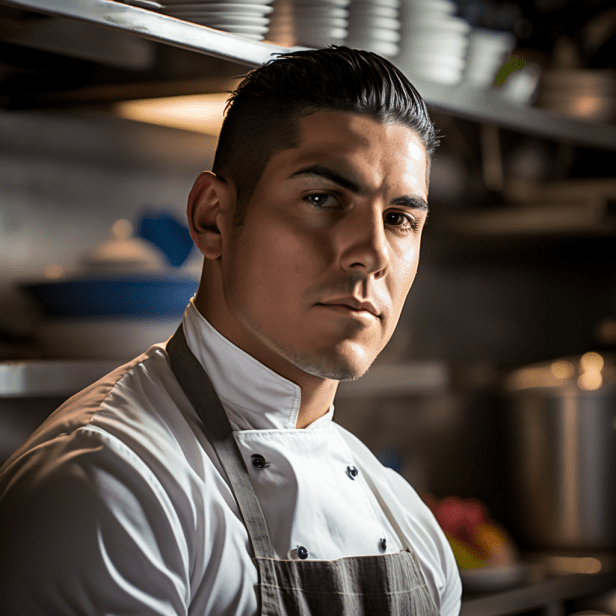Pixian Doubanjiang isn’t just another chili paste. It’s the backbone of authentic Sichuan cooking, carrying a history and flavor that no substitute can match (1). Made from a handful of simple ingredients—broad beans, fresh chili peppers, wheat flour, and salt—this fermented paste undergoes a slow, natural process in the Pixian region near Chengdu. The result is a spicy bean paste with a deep umami flavor and a texture that’s both crispy and rich. Sichuan chefs swear by it for dishes like Mapo Tofu and Twice-cooked Pork, where its savory heat and complex aroma define the experience. This article peels back the layers of Pixian Doubanjiang’s unique qualities and its cultural significance in Chinese cuisine.
Key Takeaway
- Pixian Doubanjiang’s unique fermentation process and local ingredients create a complex umami flavor essential to Sichuan dishes.
- Its crispy texture and balanced spicy heat set it apart from other chili pastes.
- The paste holds deep cultural and historical significance, symbolizing the soul of traditional Sichuan cooking.
The Unique Ingredients and Production of Pixian Doubanjiang
The Four Simple Ingredients
Pixian Doubanjiang starts with just four ingredients: broad beans (fava beans), fresh erjingtiao chili peppers, wheat flour, and salt. These aren’t just any ingredients. They’re sourced locally from Pixian (now Pidu district), a place whose soil and climate shape the very character of the paste. The broad beans provide a sturdy base, while the erjingtiao chili peppers bring a distinct heat that’s not overpowering but lively. Wheat flour and salt round out the mix, helping fermentation and flavor development.
Traditional Fermentation Process
The magic lies in how these ingredients are transformed. The paste is fermented naturally in large ceramic jars, exposed to the sun and turned regularly. This process can last months or even years (2). The specific environmental conditions of Pixian—its temperature, humidity, and native microbes—create a unique microbial flora that can’t be replicated elsewhere (3). This slow fermentation develops the paste’s complex flavors and its vibrant red oily color.
Texture and Aroma
Unlike many chili pastes that are smooth or overly thick, Pixian Doubanjiang boasts a crispy, melt-in-the-mouth texture. You can still see broad bean pieces and large chili shreds, giving it a satisfying bite. The aroma, known locally as “jiangzhi xiang,” is deep and mellow, a purely fermented scent without artificial additives. This aroma is a hallmark of quality and tradition.
Distinctive Flavor Profile of Pixian Doubanjiang
Deep Umami and Balanced Spiciness
Pixian Doubanjiang offers a flavor that’s rich and layered. The umami comes from the fermented broad beans, giving a savory depth that lingers on the palate (4). The chili peppers add a spicy heat, but it’s balanced and not harsh or drying. Instead, it carries a sweet aftertaste that rounds out the flavor, making it complex rather than one-dimensional.
The Role of Sichuan Peppercorn
While Pixian Doubanjiang itself doesn’t contain Sichuan peppercorn, it’s often paired with it in Sichuan cooking. The peppercorn’s numbing sensation complements the paste’s spicy heat, creating the famous Ma La flavor—literally “numbing and spicy.” This combination is a signature of Sichuan dishes, and Pixian Doubanjiang is the perfect base for it.
Color and Visual Appeal
When stir-fried in oil, Pixian Doubanjiang imparts a reddish-brown hue to dishes. This color isn’t just for show, it signals the paste’s rich flavor and the presence of chili oil. It’s the visual cue that many Sichuan dishes are cooked with something special.
Cultural and Historical Significance
A Legacy Over 300 Years Old
Pixian Doubanjiang traces back to the late Ming and Qing dynasties, with the Chen family credited for developing the fermentation method still used today (5). This isn’t a recent invention but a tradition passed through generations. It’s part of the local identity and pride.
National Recognition
The paste is recognized as a China Geographical Indication product and is part of China’s National Intangible Cultural Heritage. These designations protect the traditional methods and ensure that Pixian Doubanjiang remains authentic. It’s more than a condiment, it’s a cultural artifact.
Symbol of Sichuan Culinary Heritage
For Sichuan people, Pixian Doubanjiang is a symbol of their cuisine’s soul. It’s not just about flavor but about connection—to the land, to history, and to community. Using it in cooking is a way to honor that heritage.
Why Pixian Doubanjiang Is Indispensable in Sichuan Cooking
The Influence of Terroir
The unique climate, soil, water, and native microbes of Pixian create a terroir that shapes the paste’s flavor. This concept, often associated with wine, applies here too. The same recipe made elsewhere won’t taste the same because the environment is different. This terroir influence makes Pixian Doubanjiang irreplaceable.
Essential for Authentic Flavor
Sichuan chefs and home cooks alike consider Pixian Doubanjiang essential for achieving the authentic spicy, umami-rich flavor that defines Sichuan cuisine. Dishes like Mapo Tofu, Twice-cooked Pork, and Sichuan Hot Pot rely on it for their signature taste. Using any other chili paste is often seen as a compromise or even inauthentic.
Culinary Versatility
Beyond the classics, Pixian Doubanjiang is versatile. It can be used in stir-fries, braises, soups, and sauces. Its savory heat enhances a wide range of Sichuan dishes, making it a staple in the pantry.
The Role of Pixian Doubanjiang in Popular Sichuan Dishes
Mapo Tofu
Mapo Tofu is probably the most famous dish showcasing Pixian Doubanjiang. The paste creates a spicy, savory sauce that coats soft tofu and ground pork. The umami depth and balanced heat come directly from the paste, making it impossible to replicate the dish’s true flavor without it.
Twice-cooked Pork
This dish features pork belly slices stir-fried with Pixian Doubanjiang, garlic, and ginger. The paste’s chili and fermented bean flavor infuse the meat, giving it a rich, spicy heat that’s both bold and nuanced.
Sichuan Hot Pot
Pixian Doubanjiang forms the base of many Sichuan hot pot broths. Its deep red color and complex flavor create a spicy, aromatic soup that’s the heart of the hot pot experience.
Practical Advice for Using Pixian Doubanjiang
Storage and Shelf Life
Because it’s fermented and contains salt, Pixian Doubanjiang keeps well in the fridge for months. Keep it sealed tightly to preserve its aroma and prevent drying out.
Cooking Tips
Use it sparingly at first, its flavor is potent. Stir-fry it in oil to release its aroma before adding other ingredients. This step is crucial to unlock its full flavor potential.
Where to Buy
Look for Pixian Doubanjiang labeled as such, preferably from reputable brands or specialty Asian markets. Avoid generic “doubanjiang” that doesn’t specify Pixian origin, as these often lack the authentic flavor.
FAQs
What exactly is Pixian Doubanjiang and how does it differ from other Chinese condiments?
Pixian Doubanjiang is a fermented broad bean paste mixed with fermented chili that comes from Pixian County in China. Unlike regular chili paste or other Chinese condiments, this spicy bean paste takes months to ferment properly. The process creates a deep umami flavor that can’t be rushed or faked. Traditional Sichuan cooks consider it the most important ingredient in their kitchens because it adds both heat and complex taste that defines authentic Sichuan cooking.
How does Pixian Doubanjiang create the signature Ma La flavor in Sichuan dishes?
The Ma La flavor in Sichuan dishes comes from combining Pixian Doubanjiang with Sichuan peppercorn. The Doubanjiang sauce provides the “la” (spicy heat), while peppercorns add the “ma” (numbing sensation). This fermented broad bean paste brings savory heat that’s completely different from regular hot sauce. When cooked together, these ingredients create the complex taste that makes traditional Sichuan food so addictive and impossible to replicate without authentic ingredients.
Why can’t other bean pastes replace Pixian Doubanjiang in authentic Sichuan cooking?
Other bean pastes lack the specific fermentation process and climate conditions that make Pixian Doubanjiang special. This spicy bean paste develops its unique umami flavor through traditional methods passed down for generations. The fermented chili and bean combination creates layers of taste that generic chili paste simply can’t match. Serious Sichuan cooking requires this specific Chinese condiment because substitutes miss the deep, complex flavors that define real Sichuan dishes.
What role does fermentation play in developing Pixian Doubanjiang’s distinctive taste?
Fermentation transforms simple broad beans and chilies into complex Pixian Doubanjiang over several months. The fermented broad bean base develops rich umami flavor, while fermented chili adds heat with depth. This slow process creates the savory heat that makes Doubanjiang sauce irreplaceable in Chinese cuisine. Traditional Sichuan methods rely on natural fermentation to build the layered taste that gives authentic dishes their signature character and complexity.
How do professional chefs use Pixian Doubanjiang differently than home cooks?
Professional chefs understand that Pixian Doubanjiang needs proper cooking technique to release its full potential in Sichuan cooking. They often fry the spicy bean paste in oil first to activate the flavors before adding other ingredients. The Doubanjiang sauce became the foundation for building Ma La flavor in traditional Sichuan dishes. Home cooks sometimes add it too late or don’t cook it long enough, missing the deep umami flavor that makes restaurant-quality Chinese cuisine so special.
Which classic Sichuan dishes absolutely require authentic Pixian Doubanjiang to taste right?
Classic Sichuan dishes like Mapo Tofu, Twice-Cooked Pork, and Dan Dan Noodles depend entirely on authentic Pixian Doubanjiang for their signature taste. Without this fermented broad bean paste, these traditional Sichuan recipes lose their soul. The spicy bean paste provides the essential umami flavor and savory heat that defines these dishes in Chinese cuisine. Using regular chili paste or other substitutes creates completely different flavors that aren’t authentic.
How should home cooks store and use Pixian Doubanjiang for best results?
Home cooks should store Pixian Doubanjiang in the refrigerator after opening to maintain its fermented chili quality. When cooking Sichuan dishes, add this Chinese condiment early and cook it thoroughly to develop the full umami flavor. The Doubanjiang sauce works best when fried in oil first, which releases the complex taste. Start with small amounts since this spicy bean paste is very concentrated and builds the Ma La flavor foundation for authentic traditional Sichuan cooking.
What makes the climate and location of Pixian County perfect for producing this essential ingredient?
Pixian County’s humid climate and specific environmental conditions create perfect fermentation for authentic Pixian Doubanjiang. The natural bacteria and temperature variations help develop the complex fermented broad bean flavors over time. This geographic advantage explains why traditional Sichuan cooking has always centered around this region’s spicy bean paste. The local conditions produce Doubanjiang sauce with deeper umami flavor and more balanced savory heat than versions made elsewhere, making it essential for genuine Chinese cuisine.
Conclusion
Pixian Doubanjiang stands apart because of its simple yet carefully chosen ingredients, a slow and natural fermentation process unique to its region, and a flavor profile that’s rich, balanced, and deeply umami. Its cultural roots run deep, making it more than just a condiment—it’s the soul of Sichuan cooking. For anyone serious about Chinese cuisine, especially Sichuan dishes, Pixian Doubanjiang is not just essential, it’s irreplaceable. Using it means tapping into centuries of tradition and savoring a flavor that’s truly authentic.
References
- https://www.chinesefoodwiki.org/Pixian_Doubanjiang
- https://crockoftime.com/logbook/doubanjiang/
- https://www.sciencedirect.com/science/article/abs/pii/S0308814621025668
- https://chillcrispbyxueci.substack.com/p/lets-talk-about-doubanjiang
- https://www.chinastory.cn/ywdbk/english/v1/detail/20190709/1012700000042741562603235784375121_1.html
Was this helpful?

I am a skilled chef assistant with a passion for Asian cuisine, I have honed my craft through formal training at At-Sunrice GlobalChef Academy and years of experience in the culinary industry. I have extensive knowledge of cooking techniques and herbs and spices, with a particular focus on traditional Chinese dishes. I’m also an author of the book “Delicious Keto Low Carb Chinese Food for Busy Moms and Fitness Enthusiasts” which is sold on Amazon. On my blog, bowlakechinese.com, I share my expertise in Asian cuisine and provide tips and recipes for those interested in low carb Chinese cuisine.
